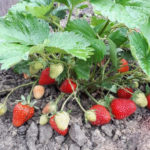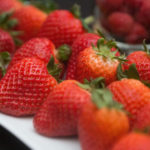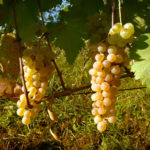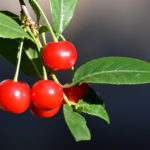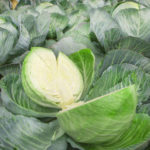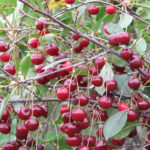Riesling grape variety
Riesling is a classic old European grape variety, which is usually understood as Rhine Riesling, although there is also a much less common R. Italian. He was born many centuries ago in the Rhine region of today's Germany. The first documentary mention of it dates back to 1435. As modern DNA research has shown, the famous cultivar evolved from the currently little-known variety of Gue blanc and the hybrid form of Traminer with wild grapes.
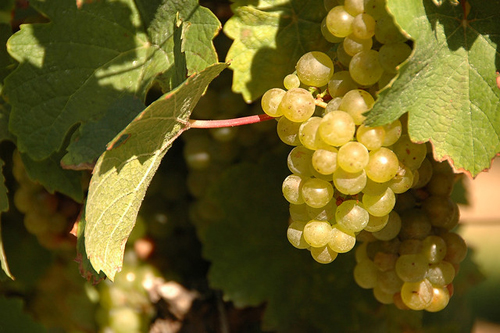
Currently, our hero is widely cultivated primarily in Germany and France, however, plantations of significant area exist in Austria, Hungary, Serbia, Czech Republic, Slovakia, Croatia, Italy, Australia, New Zealand, South Africa, USA and Canada. In general, in terms of the degree of distribution in the world, it is included in the second ten varieties, however, in terms of the quality of the drinks produced, it is able to compete with the most famous light-colored varieties - Chardonnay and Sauvignon.
Riesling is traditionally used to prepare wonderful dry, semi-dry, dessert and sparkling types of wines. It is considered one of the most "terroir" forms of grapes, along with Pinot noir, which means a dramatically changing character of wines, depending on the soil and climatic conditions of the region where the culture grows. In cool climates (for example, in many German wine regions), wines have apple notes and a noticeable level of acidity, which is sometimes counterbalanced by residual sugar. In warmer regions, with late harvest, more citrus and peach notes appear in the wine. In some countries, the characteristic lime tones are often noted in this type of drink. And even in the same place where the grapes grow, the bouquet of the finished drink can differ significantly from season to season.
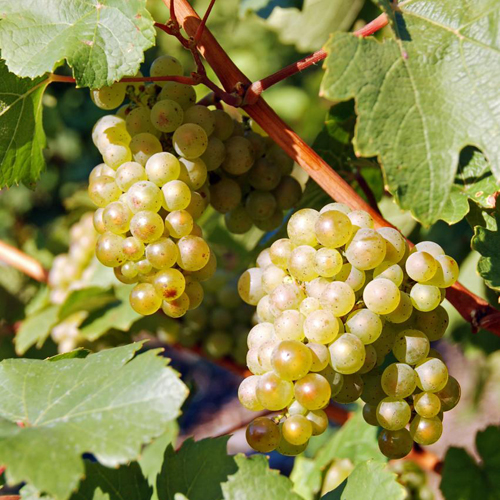
Agrobiological characteristics
The bushes are highly vigorous. The crown of the shoot is covered with a felt-type pubescence of moderate density, painted in a light green color, pink patches can be seen at the edges of the denticles. Young leaves have a bronze tint. A standard leaf of medium size, rounded, three or five lobed, not too deeply dissected. The leaf surface is rough, strongly wrinkled, with convex veins on the underside and cobweb pubescence. The profile of the leaf blade is funnel-shaped. The upper side notches are medium in depth, open lyre-shaped with a rounded bottom or closed with an oval opening. The lower notches are very small, U-shaped or barely outlined. The petiole notch is closed with a narrow elliptical lumen, or open with a narrow aperture. The petioles are usually no longer than the main vein of the leaf, differing in wine-red color due to the significant presence of anthocyanins. The teeth along the edge of the leaf blade are triangular with wide bases, transitional to dome-shaped. The flowers of the variety are bisexual, but this fact does not save our hero from peeling berries, and the buds themselves and even the ovary are distinguished by a tendency to shedding. The vine ripens quite well, while changing color from reddish to light brown. The nodes, traditionally, are darker than the internodes. The leaves of the grapes turn yellow before falling off in the fall.
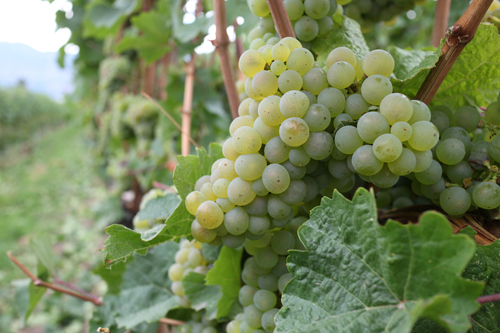
Ripening Riesling clusters are small in size, reaching 14 cm in length and 8 cm in width. Their structure can be either loose or rather dense, and the shape is cylindrical or cylindrical-conical. Typical brush weight is usually 80-100 grams. The comb does not exceed 3 cm in length. The berries are medium-sized, rounded, 12-14 mm in diameter, colored greenish-white with a yellowish tinge in good light. The surface of the grapes is covered with rare dark brown dots and a noticeable protective waxy coating of light tones. The berry weight ranges from 1.2-1.4 grams. The pulp of the fruit is very juicy with a harmonious, pleasant taste, without harsh shades in the aroma.The sugar content of the juice of berries of this variety reaches values of 18-21 g / 100 cubic meters. cm, the calculated acidity is slightly increased to 8.5-10.5 g / cubic dm. The skin is thin but very tough. The seeds are small, from 2 to 4 pieces per berry. During processing, the yield of juice from the total mass of the crop exceeds 80%, which is an excellent indicator. Combs make up 6-7%, skin 8-9%, bones 3-4%.
Our hero is a magnificent and technologically very versatile grape. It is used to make wines with a wide variety of sugar levels, but at the same time its acidity is always quite high. This circumstance makes it suitable for long exposure. Sweet Riesling wines are especially suitable for this process, as the high sugar content provides additional shelf life. At the same time, there are known cases that high-quality dry or semi-dry wine from this variety not only did not lose its properties, but also impressed the tasters with its quality at the age of more than 100 years. Various wines are stored in the town hall of German Bremen, including drinks from our hero, dating back to the 17th century. The more common aging periods for this variety are 5-15 years for dry, 10-20 years for semi-sweet, and 10-30 years for sweet versions. In older drinks, a distinctive feature is the appearance in the bouquet of mineral tones associated with the smell of gasoline or oil. For this specificity, some consumers dislike seasoned Riesling.
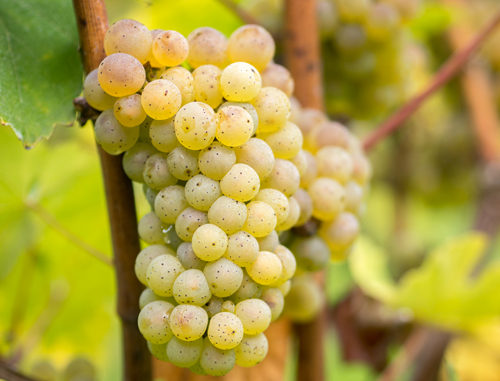
The most expensive wines of this variety are dessert drinks from the late harvest, which are produced by allowing the grapes to hang on the vines for much longer than usual. As a result of evaporation caused by the fungus Botrytis cinerea ("noble rot"), part of the moisture is removed from the berries, and the concentrated drink obtained from them is able to surprise the most fastidious gourmets with the richness of its taste and aroma.
The usual ripening period for Riesling in the traditional wine-growing regions of our country is the end of September. The duration of the growing season at this point is 150-160 days, and the sum of active temperatures is 2850-2950 ° C. The frost resistance of our hero is relatively high for a purebred representative of the noble European grapes. In this regard, it is often cultivated on a high (about 1.2 meters) trunk with a free hanging or vertically tied annual growth. If it is necessary to shelter bushes for the winter, they use standard-free multi-arm fan formations, or diagrams according to the principle of an oblique cordon.
The yield of the variety is not outstanding - 70-90 centners of bunches are obtained per hectare of vineyard, and only in the most favorable seasons, with good care, productivity can exceed 10 t / ha. The percentage of fruiting shoots in plants is usually 85-90%, the fruiting coefficient is 1.2-1.6, and the fertility coefficient is 1.6-2.0. An important and very useful feature is the late bud opening in the spring, due to which Riesling is rarely damaged by late spring frosts. In addition, up to 45% of his replacement buds are fertile. To prevent overloading of plants with shoots and crops, it is enough to carefully carry out spring pruning and subsequent fragments of sterile vines. The fruit arrows of the grapes are shortened moderately, leaving about 6-8 eyes on them.
The variety is not resistant to diseases. It is especially damaged by gray rot in wet weather. Somewhat weaker - oidium and bacterial cancer. It has some resistance to mildew. In accordance with this, a strategy for its protection should be built, which will require multiple treatments using contact and systemic chemicals.Resistance to root phylloxera is also low, and therefore planting in most regions of growth is carried out with grafted seedlings resistant to the pest. Recommended rootstocks are Berlandieri x Riparia Kober 5BB, Riparia x Rupestris 101-14 or Riparia x Rupestris 3309. The best soil and climatic conditions for planting grapes are considered to be gentle slopes with warm exposures and soils with a high lime content.
